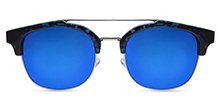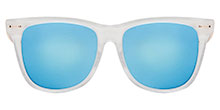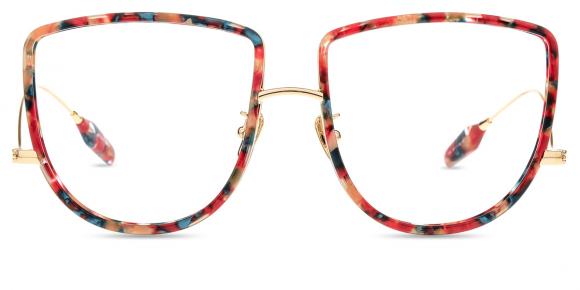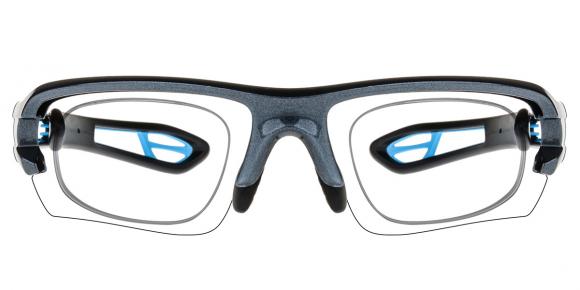You may remember your mother telling you to eat your carrots; they are good for your eyes. Well, she was right.
“Carrots are actually just one of the many foods, and supplements that contribute to good eye health,” says James McDonnell, MD, pediatric ophthalmologist, Loyola University Health System. “In some cases, eyesight can actually be improved depending on what you eat.”
Eating a variety of fresh fruits and vegetables is of particular importance. “Make a colorful plate, especially with greens, blues and reds,” says Dr. McDonnell, who has practiced ophthalmology for more than 20 years. “Certain foods have distinct benefits for the eyes in addition to overall health including many of the trendy superfoods such as kale, broccoli and sweet potatoes.”
Dr. McDonnell recommends the following foods and supplements for healthy vision.
• Astaxanthin. “This supernutrient protects eyes from developing cataracts, macular degeneration and blindness. Seaweed and wild, rather than farmed, salmon are excellent choices high in astaxanthin. It also aids in so many aspects of wellness that astaxanthin is my top recommendation for incorporation into your diet,” says Dr. McDonnell.
• Omega–3 “Prevention against age-related macular degeneration is the top benefit. Studies show that individuals who ate oily fish such as tuna, sardines, herring and salmon at least once a week were 50 percent less likely to develop neovascular “wet” macular degeneration than those who ate fish less than once per week. Omega–3, a fatty acid found in chia and flax seeds, also helps prevent dry eye. Infants fed Docosahexaenoic acid (DHA)-supplemented formula had significantly better visual acuity at two and four months of age compared with similar infants who did not have supplemented formula. DHA is just one of the many Omega-3-acids,” he said.
• Anthocyanins. “Blueberries, bilberries and especially black currants contain high amounts of anthocyanins and help to maintain the health of the cornea and blood vessels in every part of the eye. They also help reduce the risk of cataracts and macular degeneration as well as decrease inflammatory eye disease and diabetic retinopathy,” says Dr. McDonnell. “Bilberries also were used to improve the night vision of American pilots during World War II and provide 50 times the antioxidant power of vitamin E and ten times that of vitamin C.”
• Vitamin D. “Safe sun exposure, fish oils, fatty fish and to a lesser extent beef liver, cheese, egg yolks and certain mushrooms contain this master hormone which acts on more than 4000 genes. Vitamin D3 supplementation has been shown to help prevent age-related macular degeneration, reduce retinal inflammation and actually improve vision,” he said.
• Zeaxanthin. “Help decrease the risk of age-related macular degeneration by eating dark, green leafy vegetables such as kale, broccoli, collards, raw spinach and romaine lettuce,” says Dr. McDonnell. “Lightly cooking these vegetables increases your body’s ability to absorb these nutrients.”
• Bioflavonoids. “Studies show that cataracts and macular degeneration may be prevented through the consumption of tea, red wine, citrus fruits and cherries,” says Dr. McDonnell.
• Beta-carotene. “Beta-carotene protects against night blindness and dry eyes,” says Dr. McDonnell. “Good food sources are carrots, sweet potatoes, spinach, kale and butternut squash.”
• Lutein. “The best source is from organic eggs laid by pastured organic hens,” he says. “You can also take supplements made from marigold flowers.”
Dr. McDonnell is a professor and Director of Pediatric Ophthalmology and Adult Ocular Realignment at Loyola University Chicago Stritch School of Medicine. He treats children and adults at the Loyola Maywood and Oakbrook Terrace campuses.
The Department of Ophthalmology offers a complete range of comprehensive and subspecialty eye care. All Loyola ophthalmology physicians are board certified with subspecialty fellowship training. Together with Loyola optometrists, the ophthalmologists offer comprehensive diagnostic services and personalized treatment for adults and children. As a tertiary care facility, the ophthalmology department uses the most current, state-of-the-art equipment and procedures. Loyola’s ophthalmology team also has a long history of international service, providing free eye care to some of the world’s most underserved communities.














